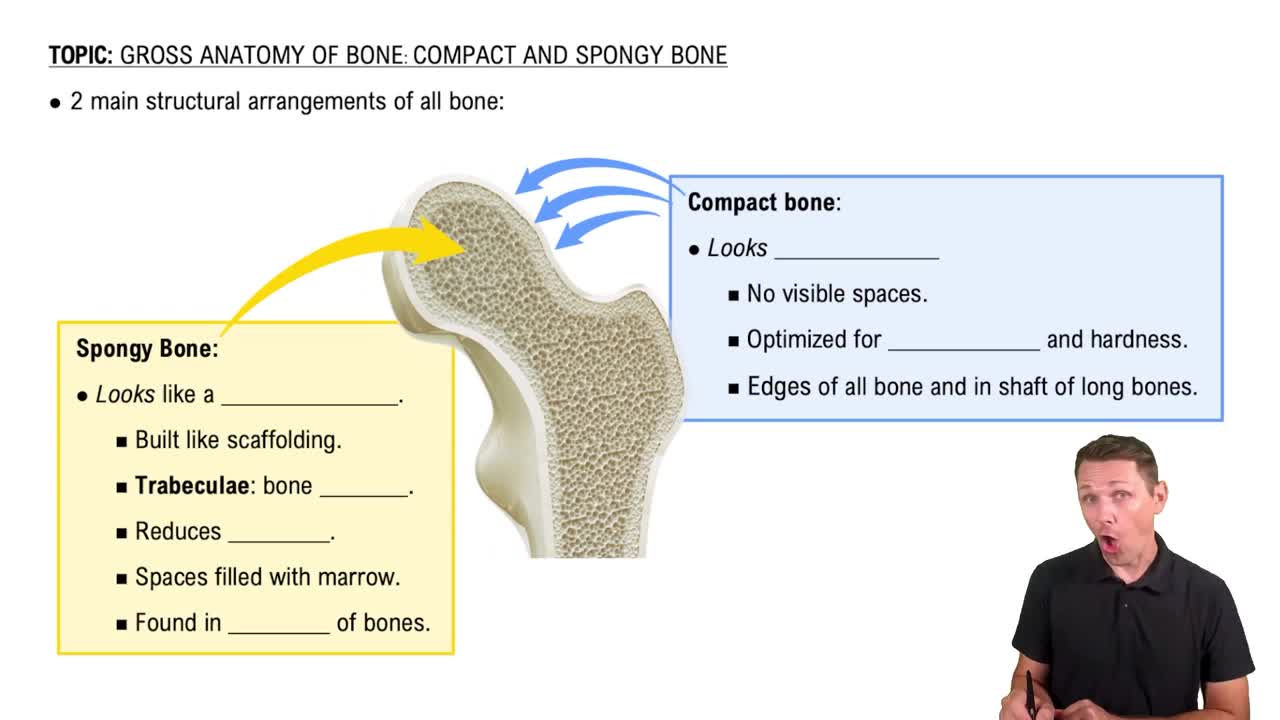Here are the essential concepts you must grasp in order to answer the question correctly.
Bone Density and Weight-Bearing Activity
Bone density is the measure of the amount of mineral matter per square centimeter of bones. Weight-bearing activities stimulate bone formation and maintain bone density. Individuals who are wheelchair-bound often lack the mechanical stress that comes from walking or standing, leading to decreased bone density and resulting in thin, weak bones.
Recommended video:
Density of Liquid Water vs. Solid Ice
Disuse Osteoporosis
Disuse osteoporosis is a condition where bones lose density and strength due to lack of physical activity. In wheelchair-bound individuals, the absence of regular weight-bearing movements can lead to accelerated bone loss, particularly in the lower limbs, making bones more susceptible to fractures and deformities.
Recommended video:
Microscopic Anatomy of Bones - Bone Cells Example 2
Muscle Atrophy and Its Impact on Bone Health
Muscle atrophy refers to the wasting or loss of muscle tissue, which can occur when muscles are not used regularly. Since muscles exert forces on bones, the reduction in muscle mass and strength in wheelchair users can contribute to bone weakening, as the lack of muscle activity diminishes the signals that promote bone maintenance and growth.
Recommended video:
 Verified step by step guidance
Verified step by step guidance


